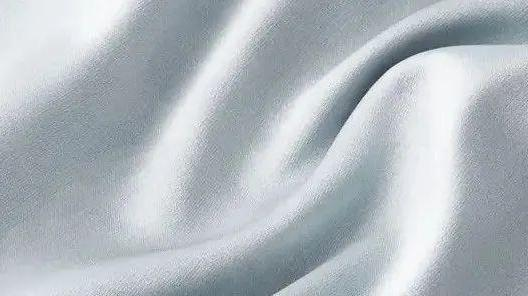Silk fabric has a soft and smooth texture, soft feel, light, colorful color, cool and comfortable wearing characteristics, using twill organization preparation. According to the weight of the fabric square meters, it is divided into thin type and medium size. According to the different postprocessing is divided into dyeing, printing two kinds. Belongs to high-grade fabrics, has excellent dye performance, with acid, neutral dyes and so on can be dyed. But it is easy to be damaged in alkaline medium, so it is generally mainly acid dyes, supplemented by neutral, direct, reactive dyes. In the fabric dyeing and finishing process treatment, all rely on the high-tech production process, using environmentally friendly dyes, color fastness up to 3- -4.5 level. Let people appreciate the unique color aesthetic feeling of silk fabric, while maintaining the nutrition and nature of silk fabric. In the process of fabric post-processing, different degrees of pre-shrinkage treatment is also carried out to ensure that the shrinkage rate of the fabric used is 0.5-3%.
To introduce two simple methods
(A) hand feel visual inspection method
(1) Visual inspection, the real silk has the luster of pearl show and soft luster. And the fabric luster of chemical fiber is not soft, bright and dazzling.
(2) Silk fiber is slender and long, cotton fiber is short, and wool is curly. Chemical fiber uniformity is good.
(3) Handfeel method: silk feel soft, close to the skin smooth and comfortable.
(2) Burning method
(1) Silk when burning feather smell, difficult to burn, will be extinguished. The ashes are brittle, crisp, fluffy, and black.
(2) rayon (viscose fiber) burning paper mixed with chemical smell. Continued combustion is very fast. Emshes except no light without ash, between a small amount of gray black ash.
(3) Cotton and polyester combustion is very weak sweet, not directly burning or slow burning, ashes hard round, into beads.
(4) Cotton and hemp have the smell of burning paper, soft ashes, black and gray.
(5) Wool burns just like silk. Visual inspection shows the difference.
Silk and Health care: Since ancient times, true silk has been known as the “queen of silk”. In modern times, people have given it the reputation of “health fiber” and “health fiber”. Therefore, the health care function of true silk fiber is incomparable and irreplaceable by any fiber. Silk fiber contains 18 kinds of amino acids necessary for human body, not much different from the amino acids contained in human skin. Therefore, it is also called the “second skin” of human beings. Wear true silk clothes, not only can prevent the radiation of ultraviolet ray, defense harmful gas invasion, resist harmful bacteria, but also can enhance the vitality of body surface skin cells, promote the metabolism of skin cells, have good auxiliary treatment effect to some skin diseases at the same time. In addition, because of the special hygroscopic and permeability, there is the role of regulating body temperature and water. Conservation of silk silk brocade, ancient satin, soft satin, large flowers, velvet, golden velvet, velvet, velvet, satin, gold treasure, light gauze, yarn, dyed tav silk, etc., can not be washed but only dry cleaning. The silk fabrics that can be washed, when washing should be combined with its own characteristics, using different washing methods.
Post time: Jan-04-2023







